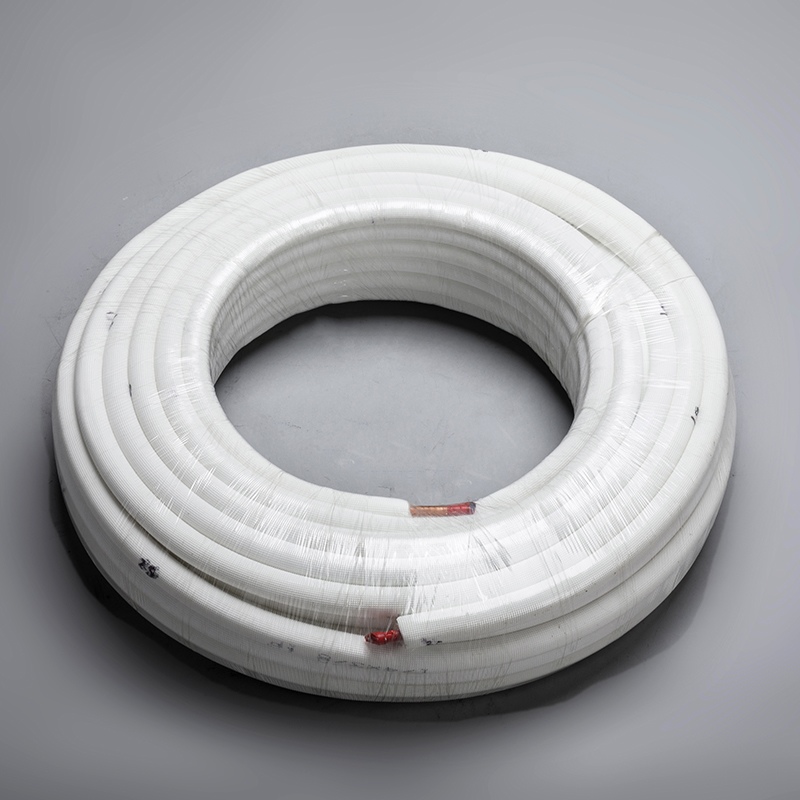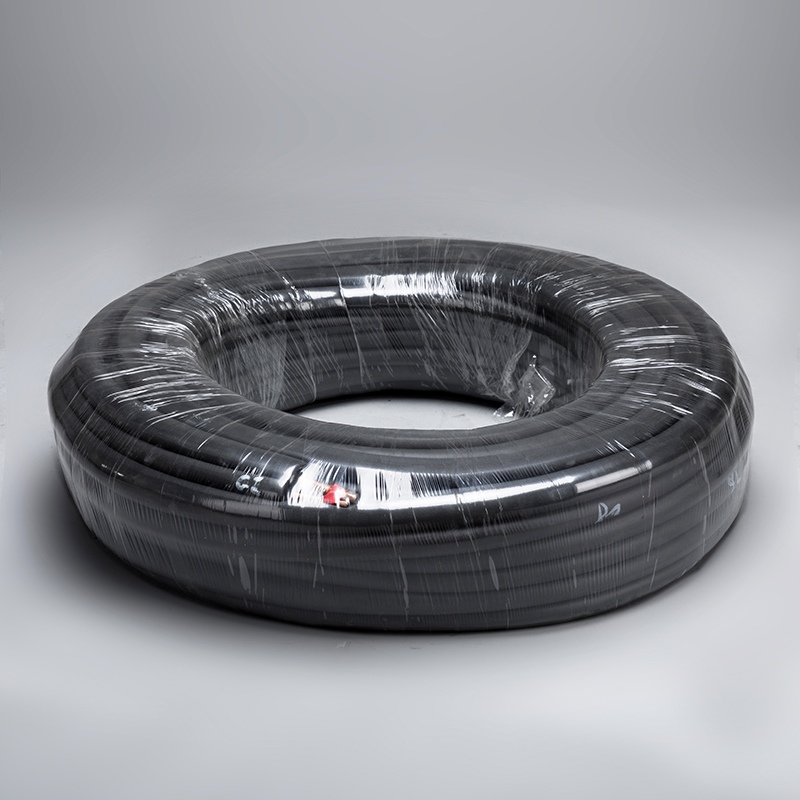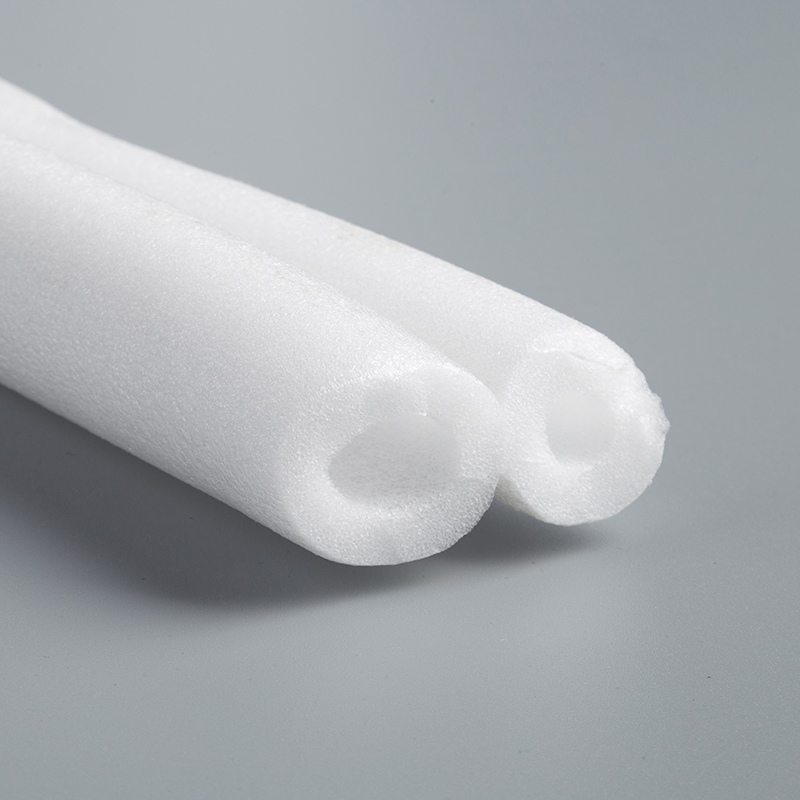Price Trends in Copper Pipes for Air Conditioning Systems

Write a 'Trends' blog post on 'Price Trends of Copper Pipes for Air Conditioning'
Copper pipes are integral to air conditioning systems, ensuring efficient heat transfer and durability. Widely used in HVAC devices like refrigerators and air conditioners, copper pipes offer corrosion resistance and reliability. With excellent thermal conductivity, they play a crucial role in maintaining optimal performance. The current market scenario highlights the significance of understanding price trends for copper pipes. This blog aims to analyze the factors influencing these trends and provide insights into the forecasted growth of the copper pipe market.
Market Overview
Historical Price Trends
Price trends over the past decade:
The price trends of copper pipes for air conditioning have shown significant fluctuations over the last ten years, impacting various industries reliant on this essential component.
Global events such as economic crises and geopolitical tensions have directly influenced the pricing dynamics of copper pipes, leading to both spikes and declines in costs.
Major events impacting prices:
Historical Examples: In 2016, a surge in copper prices due to increased demand from emerging economies caused a ripple effect across industries using copper pipes.
The COVID-19 pandemic in 2020 resulted in a temporary decline in demand for copper pipes, affecting their market value and leading to adjustments in production and pricing strategies.
Current Market Scenario
Current price levels:
Presently, the market reflects a balance between supply and demand for copper pipes, with prices stabilizing after recent fluctuations.
Manufacturers are closely monitoring raw material costs and adjusting prices accordingly to maintain competitiveness in the market.
Comparison with other materials:
When compared to alternative materials like PVC or PEX, copper pipes stand out for their superior durability and heat conductivity.
Despite being relatively more expensive, the long-term benefits of using copper pipes in air conditioning systems outweigh the initial investment costs.
Future Price Projections
Expected trends in the next 5-10 years:
"The global copper pipes and tubes market is expected to reach US$ 44 billion by 2031 with a projected CAGR of 3.1% from 2022 to 2031."
Industry experts anticipate a steady increase in demand for copper pipes driven by technological advancements and sustainable construction practices.
Factors influencing future prices:
"The demand for copper pipes decreased in 2020 due to low demand from industries like construction and HVAC caused by the COVID-19 pandemic."
Environmental considerations regarding energy consumption during production may impact future pricing strategies for copper pipes, prompting innovations towards more sustainable manufacturing processes.
Factors Driving Market Growth
Demand in Air Conditioning Systems
Increasing urbanization and industrialization
Copper pipes play a vital role in air conditioning systems, especially with the rise in urbanization and industrialization. As cities expand and industries grow, the demand for efficient HVAC systems equipped with copper pipes increases. The excellent thermal conductivity of copper ensures optimal heat transfer within these systems, contributing to energy efficiency.
Technological advancements in HVAC systems
The continuous evolution of HVAC technology drives the demand for high-performance components like copper pipes. Innovations in air conditioning units focus on enhancing energy efficiency and sustainability, aligning with global efforts towards eco-friendly practices. Copper's durability and corrosion resistance make it a preferred choice for manufacturers aiming to develop cutting-edge HVAC solutions.
Supply Chain Dynamics
Mining and production of copper
The mining and production processes of copper are crucial aspects of the supply chain dynamics impacting the market growth of copper pipes. Sustainable mining practices and efficient extraction methods ensure a stable supply of raw materials for manufacturing high-quality copper pipes. The emphasis on responsible sourcing underscores the industry's commitment to environmental stewardship.
Global supply chain disruptions
Global events such as natural disasters or geopolitical tensions can disrupt the supply chain of copper pipes, affecting both production capacities and pricing strategies. Manufacturers need to anticipate potential disruptions and implement contingency plans to mitigate risks associated with supply chain vulnerabilities. Collaborative efforts within the industry can help address challenges related to logistics and distribution.
Economic Factors
Inflation and currency fluctuations
Economic factors like inflation rates and currency fluctuations have a direct impact on the pricing dynamics of copper pipes. Fluctuations in exchange rates can influence import costs of raw materials, subsequently affecting overall production expenses. Manufacturers must adapt to changing economic conditions by implementing strategic pricing mechanisms that account for market volatility.
Government policies and regulations
Government policies and regulations play a significant role in shaping the market landscape for copper pipes. Environmental regulations focusing on sustainable practices drive innovation within the industry, leading to the development of eco-friendly products. Compliance with quality standards set by regulatory bodies ensures consumer confidence in the reliability and performance of copper pipes.
Market Segmentation
By Type of Copper Pipe
Copper pipes are available in various types to cater to different needs in the construction industry. The common types include Type K, Type L, and Type M copper pipes, each with specific applications in water supply lines and refrigerant lines for HVAC systems.
Soft copper pipes
Soft copper pipes, such as Type K, offer flexibility and ease of installation, making them suitable for residential plumbing systems.
These pipes are commonly used in water supply lines due to their malleability and resistance to high temperatures.
Hard copper pipes
Hard copper pipes, like Type L and Type M, provide durability and strength for commercial applications requiring robust piping solutions.
With superior corrosion resistance, hard copper pipes are ideal for refrigerant lines in HVAC systems that demand long-term reliability.
By Application
Copper tubes and piping play a crucial role in heating ventilation and air conditioning (HVAC) devices across residential and commercial settings. The versatility of copper pipes allows for efficient heat transfer within air conditioners, refrigerators, and air filters.
Residential air conditioning
In residential settings, copper pipes are extensively used for air conditioning units due to their excellent thermal conductivity.
The durability of copper ensures longevity in HVAC systems, providing homeowners with reliable cooling solutions.
Commercial air conditioning
Commercial establishments rely on the performance of copper tubes in large-scale air conditioning systems to maintain optimal indoor temperatures.
Copper's ability to withstand high pressure and temperature variations makes it a preferred choice for commercial HVAC applications.
By Region
The demand for copper pipes varies across regions based on economic factors, technological advancements, and infrastructure development. Different regions exhibit unique trends in the usage of copper piping solutions.
North America
North America showcases a significant market share for copper tubes driven by the region's focus on sustainable construction practices.
The adoption of energy-efficient HVAC systems utilizing copper components contributes to the growth of the market in North America.
Europe
In Europe, there is a growing emphasis on eco-friendly building standards that promote the use of environmentally sustainable materials like copper pipes.
The European market witnesses innovations in HVAC technology integrating copper piping solutions for enhanced energy efficiency.
Asia-Pacific
The Asia-Pacific region experiences rapid urbanization leading to increased demand for advanced HVAC systems featuring copper tubes.
Emerging economies in Asia-Pacific prioritize infrastructure development using durable materials like copper to ensure long-term operational efficiency.
Regional Analysis

North America
Market size and growth rate
The copper pipes and tubes market in North America witnessed substantial growth, reaching a market value of USD 2552.23 million in 2023. With a projected CAGR of 1.57%, the market is expected to expand further, aiming to achieve USD 2845.74 million by 2032.
The key trends driving this growth include the increasing demand for hybrid and electric vehicles, where copper plays a vital role in various components like batteries and charging instruments. This trend is anticipated to boost the utilization of copper pipes and tubes in the automotive sector, contributing to market expansion.
Europe
Market size and growth rate
In Europe, the market for copper pipes and tubes demonstrates a promising outlook with a current valuation of US$ 32.1 billion as of 2021. The projected CAGR of 3.1% from 2022 to 2031 indicates significant growth potential, aiming to reach US$ 44 billion by the end of 2031.
One of the key drivers propelling this growth is the region's focus on eco-friendly building standards that prioritize sustainable materials like copper pipes. As environmental awareness increases, there is a growing preference for energy-efficient HVAC systems incorporating copper components.
Asia-Pacific
Market size and growth rate
The Asia-Pacific region stands out as a dynamic market for copper tubes, driven by rapid urbanization and infrastructure development initiatives. The demand for advanced HVAC systems featuring copper tubes has led to significant market expansion.
With emerging economies emphasizing durable materials like copper for long-term operational efficiency, the Asia-Pacific market showcases robust growth potential. This trend aligns with global efforts towards sustainability, positioning copper pipes as essential components in modern construction practices.
Major Market Players
Leading Companies
Source 21, Inc.
At Source 21, Inc., they pride themselves on providing top-notch copper products for a wide range of industrial and commercial needs. Their reputation is built on quality, accessibility, and customer satisfaction.
The company offers an extensive array of copper products designed to meet diverse requirements while ensuring uncompromised excellence.
Emerging Players
Various Companies in the Copper Pipes and Tubes Market
Copper pipes and tubes are crucial components used across various industries, especially in HVAC devices like refrigerators, air conditioners, and air filters.
Different types of copper pipes are available in the market, including Type K, Type L, Type M pipes, and copper DMV pipes. These pipes are known for their corrosion resistance and are widely utilized in plumbing systems to prevent corrosion.
The key features of copper pipes and tubes include being lightweight, cost-effective, easy to join, and having a long service life.
Competitive Landscape

Market Competition
Competitive intensity
The competitive landscape in the copper pipes and tubes market exhibits a high level of intensity, with key players vying for market share through innovative product offerings and strategic partnerships.
Key competitive strategies
Companies are focusing on diversifying their product portfolios to cater to evolving consumer demands and differentiate themselves from competitors. Additionally, strategic alliances and mergers are being pursued to enhance market presence and expand global reach.
Market Challenges
Barriers to entry
Entry barriers in the copper pipes and tubes market pose challenges for new entrants seeking to establish a foothold. Existing players benefit from established distribution networks, brand recognition, and economies of scale, making it difficult for newcomers to compete effectively.
Challenges faced by existing players
Established companies encounter challenges related to maintaining cost competitiveness amidst fluctuating raw material prices and evolving regulatory standards. Adapting to technological advancements while ensuring product quality and compliance with industry norms remains a constant challenge for existing market players.
Key Takeaways
Summary of Price Trends
Insights from historical and current trends
Consumer preferences are shifting towards sustainable HVAC solutions with copper pipes. Manufacturers are aligning product offerings with changing consumer preferences to provide reliable, efficient, and eco-friendly solutions for modern HVAC requirements.
The copper pipes and tubes market is being driven by energy efficiency and sustainable building practices. There is a growing emphasis on energy efficiency and sustainable building practices that fuel the demand for copper pipes and tubes. Governments promoting copper use in plumbing systems can contribute to market growth.
Future Outlook
Strategic Recommendations
Increasing demand for copper pipes and tubes due to sustainability trends indicates a positive trajectory for the market. Copper pipes are in high demand over plastic tubes due to properties like reliability, durability, cost-effectiveness, and recyclability. Industries shifting towards eco-friendly materials are driving this demand.
Copper pipes are known for being durable, corrosion-resistant, and ideal for various applications. They are highly durable, corrosion-resistant, and excellent conductors of heat and electricity. Widely used in plumbing, HVAC systems, and electrical wiring.
For manufacturers:
Align Product Offerings: Manufacturers should align their product offerings with the changing consumer preferences towards sustainable HVAC solutions using copper pipes.
Focus on Energy Efficiency: Emphasize energy efficiency in product design to meet the increasing demand for eco-friendly HVAC components.
Incorporate Sustainable Practices: Integrate sustainable manufacturing practices to enhance the overall value proposition of copper pipes in the market.
For investors:
Recognize Sustainability Trends: Investors should recognize the growing trend towards sustainability in construction materials like copper pipes.
Monitor Market Demand: Stay informed about the increasing demand for copper pipes driven by sustainability initiatives across industries.
Evaluate Long-Term Viability: Assess the long-term viability of investments in companies involved in the production or distribution of copper piping solutions amidst evolving environmental regulations.
By focusing on these strategic recommendations, both manufacturers and investors can capitalize on the rising demand for copper pipes driven by sustainability trends in the HVAC industry.
Understanding changing consumer preferences is crucial for stakeholders to adapt to market trends. Shifts in consumer choices can significantly impact industry dynamics and market trends.
Adapting to emerging trends such as digitalization, automation, AI, IoT, and data analytics is essential for driving efficiency, innovation, and new business models. Emerging trends are reshaping industries and require proactive adaptation.
The market growth projections indicate a promising future with a compound annual growth rate of 15% expected. The market is poised for significant growth, presenting opportunities for stakeholders to capitalize on these positive projections.
See Also
The Impact of Pure Copper Tubing on Air Cooling
Benefits of Selecting Copper Tubing for Air Cooling
The Essential Role of Copper Tubing in Effective Air Cooling
Key Factors in the Copper Tubing Revolution for Air Cooling
Exploring Future Trends in Copper Tubing Production for Air Cooling

